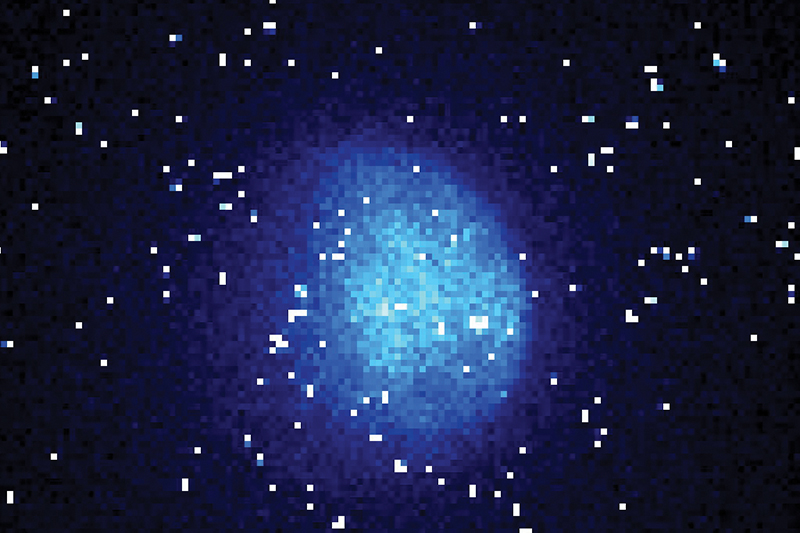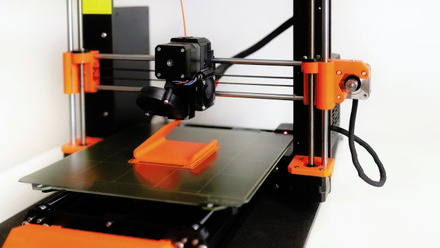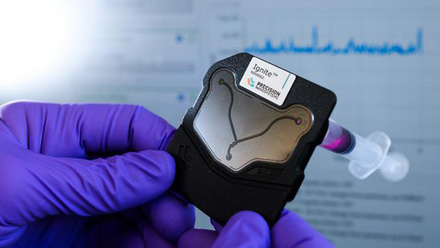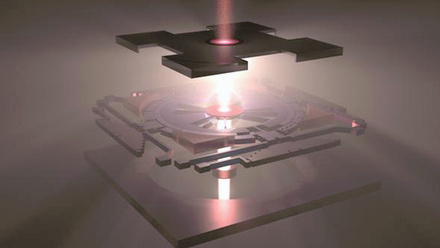'World first' carbon-14 diamond battery
The isotope known for radiocarbon-dating the past might power batteries thousands of years into the future.

A 'world-first', proof-of-concept, diamond battery has been made using the radioactive isotope carbon-14 (C14), which has a half-life of 5,700 years.
The team behind it brings together scientists and engineers from the UK Atomic Energy Authority (UKAEA) and the University of Bristol, UK.
Due to the half-life of C14, these batteries could be powered for thousands of years, suggest Dr Eseosa Ekanem and Fatimah Sanni of UKAEA.
They propose such batteries could power devices with low albeit continuous microwatt levels of power in medical devices, space probes and remote sensors, where it might not be possible to replace conventional batteries.
They explain how it operates via beta voltaics. 'The battery operates using beta particles emitted by the C14 during radioactive decay, and these particles interact with synthetically lab-grown diamonds converting their energy into small electrical currents.
'In addition, the diamond has a high-thermal conductivity making the energy-conversion process very efficient. The batteries are also chemical resistant and degradation is minimal, in comparison to chemical batteries which degrade over time due to repeated charging cycles.'
The C14 isotope can be generated from radioactive graphite waste from nuclear fission reactors, while synthetic diamonds are grown in the lab through chemical vapour deposition (CVD), creating layers that encapsulate the C14.
'The diamond structure itself acts as a radiation shield as the C14 is securely stored and embedded within the structure,' explain Ekanem and Sanni. Carbon-14 was chosen because it emits short-ranged radiation and is quickly absorbed by any solid material, with no radiation escaping.
The prototype diamond batteries measure around 10x10mm and up to 0.5mm thick. This is the 'active' device and does not include metallic contacts and wiring to complete the circuit.
Professor Neil Fox, at the University of Bristol, adds, 'This enables a number of new device architectures to be realised for active-diamond electronics that have not been possible to date, which include beta voltaics, beta-enhanced thermionics [and] charge neutralisers.'
He continues, 'Beta voltaics traditionally employ a radioisotope source that is physically separated from the voltaic energy harvester, which severely limits the amount of beta radiation (source efficiency) that can be harvested due to there being a physical interface between the beta source and the voltaic device. A C14 beta voltaic, by contrast, has almost a 100% source efficiency.'
Fox believes the CVD process will help scalability, as it is 'an established technique for producing synthetic diamond thin films of carbon-12 for technological applications in the electronics sectors and for scientific research'.
However, he notes that 'the production of synthetic diamond films composed of pure C14 is more challenging because the gaseous feedstock material is very expensive (around US$46k/L) and is also radioactive.
'At the university, we have published and patented a hybrid CVD process called ‘static flow’ CVD to enable high-quality, thin-film diamonds to be grown using a fixed volume of feedstock hydrogen and isotopically-pure methane gases.'
The radioactive nature of the methane gas means the C14 diamond is synthesised in a specially-designed, static-flow, CVD reactor installed in an active handling facility at UKAEA Culham.
This is key, Fox suggests. 'The static-flow CVD process is scalable, enabling large areas of isotopically-pure, multi-layer, diamond thin films to be synthesised for device production.
'A multi-chamber CVD system would be used to produce vertical, semiconductor-diode junctions composed of inactive and radioactive thin films. In such junctions, the radioactive diamond is safely encapsulated within an inactive diamond to allow all of the beta radiation to be utilised by the device.'
The team suggests the batteries could power active radio frequency tags when devices need identifying and tracking for decades, either on Earth or in space – e.g. spacecraft or payloads – reducing costs and extending operational lifespan.







